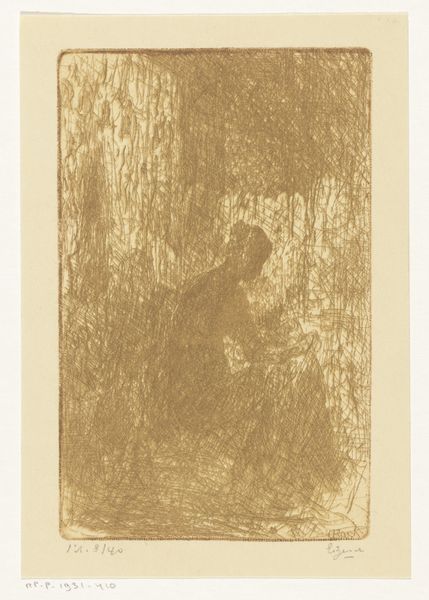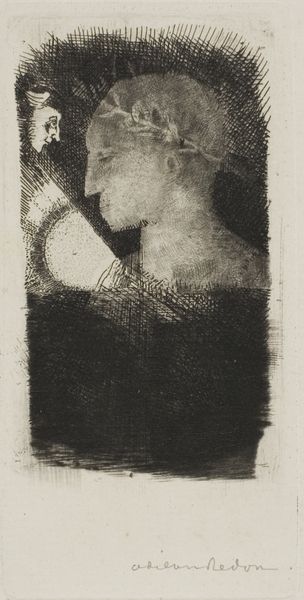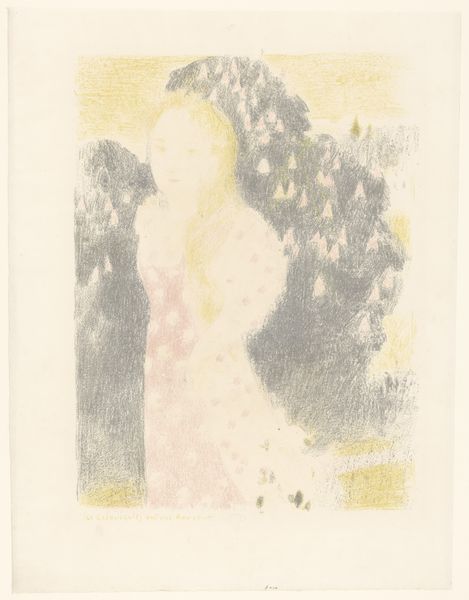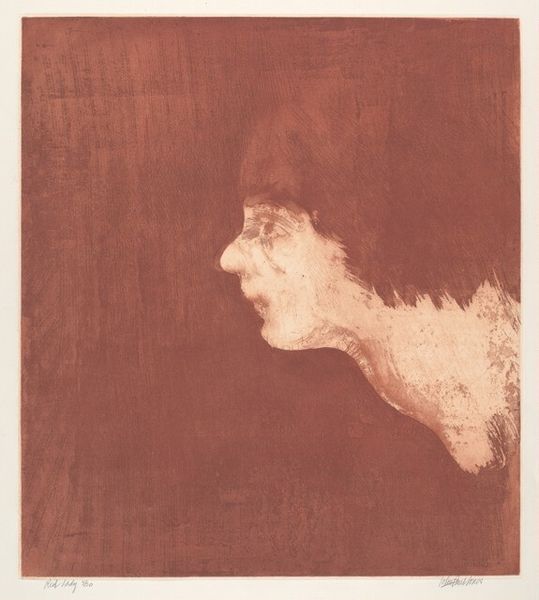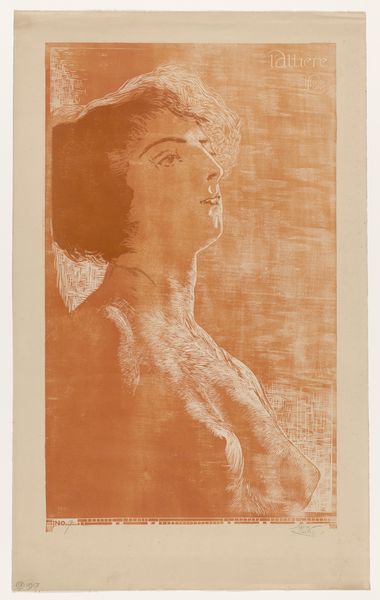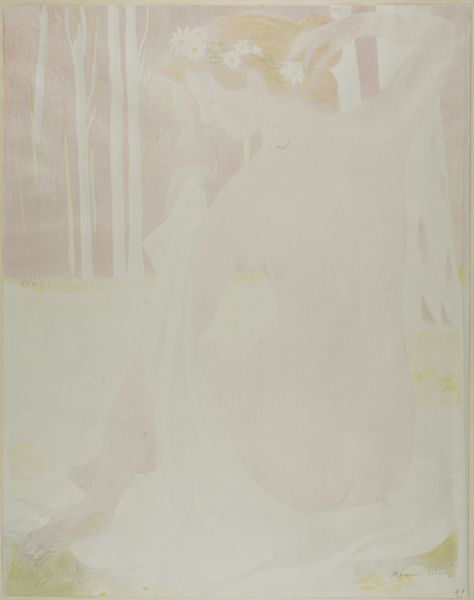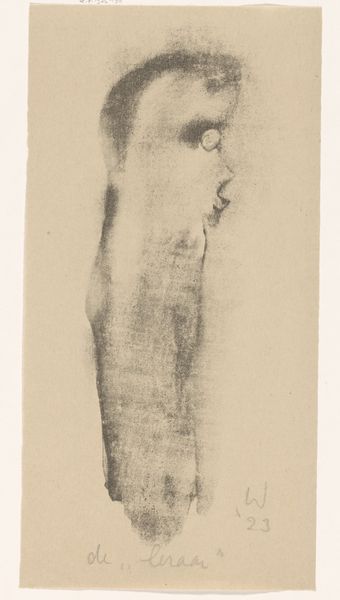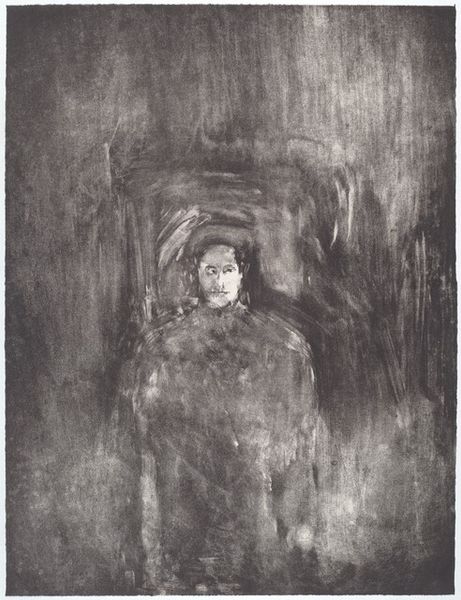
Copyright: National Gallery of Art: CC0 1.0
Curator: This lithograph, created by Odilon Redon in 1897, is entitled "Tete d'Enfant avec Fleurs," or "Head of a Child with Flowers." Editor: The first impression is overwhelmingly soft. Everything seems to bleed into everything else; there are no sharp edges to anchor the composition. A hazy dreamscape in peach. Curator: The choice of a child as the subject in fin-de-siècle Europe is worth exploring. Childhood was increasingly idealized, becoming a symbol of innocence and a space of uncorrupted potential, though certainly limited by their social position and race. Redon’s art often navigated the tensions between reality and dream, offering subtle critiques of bourgeois values. Editor: I agree. It has a dreamy, almost ephemeral quality. Redon’s mastery here lies in the texture and subtle gradations of tone achieved through lithography. The blurring of the figure into the floral background creates an intriguing spatial ambiguity. Do you find that the flowers are more than decorative elements? Curator: Definitely. Consider the historical language of flowers, where specific blooms conveyed coded meanings. In Redon's context, however, symbolism shifts. The flowers can also represent both beauty and the transience of life, a common theme during this era, the precarity experienced in one's youth, with these children at the time treated as small adults with child labor occurring frequently. Editor: The tonal unity is also important. This nearly monochromatic palette flattens the image, focusing attention on the gentle contours and delicate interplay of light and shadow. Curator: Redon employed such techniques to evoke subjective experience, pushing back against purely representational art. These choices opened up avenues for later movements like Surrealism, with such an important focus on subconscious expression. Editor: The flowers are also strategically positioned, framing the child's face, but in such a way that the figure remains recessive. It suggests a fragile connection to the natural world. Well, thinking about the image’s composition and technique has altered my initial read on this piece. Curator: For me too, analyzing its historical context, combined with understanding the subjective choices Redon made at the time helps deepen its complexity.
Comments
No comments
Be the first to comment and join the conversation on the ultimate creative platform.
